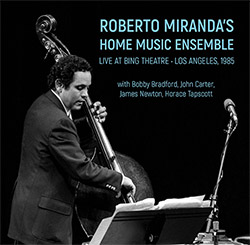
Dark Tree's Roots series continues to unearth hidden masterworks from the West Coast scene, here with bassist Roberto Miranda's Home Music ensemble in 1985, an 11-piece large band performing Miranda's lyrically rhythmic compositions, with an all-star cast including flutist James Newton, clarinetist John Carter, pianist Horace Tapscott, trumpeter Bobby Bradford, &c.
Out of Stock
Quantity in Basket: None
Log In to use our Wish List
Shipping Weight: 3.00 units
Sample The Album:
Roberto Miranda-double bass, congas
Bobby Bradford-cornet, trumpet
John Carter-clarinet
James Newton-flute
Horace Tapscott-piano
Thom David Mason-alto saxophone, tenor saxophone, bass clarinet
Louis R. Miranda, Sr.-vocals, percussions
Louis R. Miranda, Jr.-drums
David Bottenbley-guitar, electric bass, percussion, vocals
Elias Buddy Toscano-drums, timbales
Cliff Brooks-timbales, congas, bongos
Click an artist name above to see in-stock items for that artist.
Includes a 16-page booklet with liner notes by David Keller, color and b&w images, the flyer for the concert, and detailed information.
UPC: 3473351000147
Label: Dark Tree Records
Catalog ID: DTRS14
Squidco Product Code: 30117
Format: CD
Condition: New
Released: 2021
Country: France
Packaging: Cardboard Gatefold
Recorded live at the Bing Theatre, in Los Angeles, California, on May 25th, 1985, by Bruce Bidlack.
"In the post World War II era, dozens of young African Americans in South Central Los Angeles found their way to careers in music. In a community facing challenging social conditions and with little to no outside support, they would become artists, supported by the best that their community and culture had to offer, from neighborhood and family to schools and churches, private teachers, formal and informal spaces and institutions, and more than a few unsung heroes."-Steven L. Isoardi
"Auspicious and affirmational, Live at Bing Theatre - Los Angeles, 1985 documents a particularly momentous occasion in bassist/conguero Roberto Miranda's life. The concert constituted the culmination of his academic studies at the University of Southern California and served as the public performance of his Master's Recital. Miranda financed the ambitious venture with a precedent-setting grant from the National Endowment of Arts. He was committed to populating his ensemble with a dream assemblage of faculty peers, jazz icons and perhaps most importantly, family. The results were professionally recorded and stand out now thirty-six-years later as something of a perfect convergence of musicians, material and marshalled inspiration.
Miranda's program presents a series of dynamic originals that unfold in suite-like succession. "Platform for Freedom" immediately favors the rhythm section, specifically the racing give and take between leader and Horace Tapscott. The pianist puts the recital hall instrument through a dizzying set of paces with Miranda's accelerated pizzicato meeting him blow for blow. Tapscott was the bassist's employer and mentor and the rapport shaped from copious gigs together is on detailed display prior to a drum kit finale by Miranda's older brother Louis. "Faith" takes shape around colorful charts advanced by the collective air power of the horns, which include Bobby Bradford, John Carter, James Newton and the chair of the USC Jazz Studies program, Thom David Mason.
"Agony in the Garden" spotlights the percussion section featuring Miranda, his brother, and his father, Louis Sr. along with Elias "Buddy" Toscano and Cliff Brooks augmenting drum kit with a phalanx of congas, bongos and timbales. The percussionists carry over into the opening strains of "Prayer #1," which sprawls with purpose across a quarter of an hour. Bobby Bradford's bold brass guides the horns through the oceanic ensemble patterns and the piece takes on the grandeur of an ancient processional with the extra aerial heft of James Newton's acrobatic flute. Powerful swells and rests alternate, beautifully framed by soloists, advancing and receding currents of percussion and Tapscott's solemnly sonant keys.
The extended ballad "Deborah Tasmin" is nearly as enterprising in scope and implementation. Hefting tenor sax, Mason alternates with Newton and Carter in the tempered exploration of the leader's sensuous motifs. Miranda adds commentary on resonant strings and the performance is overflowing with soulful and voluptuous interplay that eventually adds the craggy electric guitar and bass of David Bottenbley. An amplified bass solo and a final call and response percussion piece "Dance of Blessing, Happiness & Peace" complete the set with ardent audience applause peppered between. Miranda's still active as an educator and performer, but this memorable milestone remains an earlier career peak."-Derek Taylor, Dusted Magazine
Includes a 16-page booklet with liner notes by David Keller, color and b&w images, the flyer for the concert, and detailed information.
Get additional information at Dusted Magazine
Artist Biographies
• Show Bio for Roberto Miranda "Roberto Miranda, Bass. Adjunct Assoc. Professor, Global Jazz Studies. String bass; Director, Jazz Combo Roberto Miranda is a dynamic bassist who is noted for his inventive, high-energy improvisations. He is adept in both soulful passages and fleet percussive lines, and is fluent in all jazz idioms. He has toured, played and recorded with an impressive array of jazz artists, including Kenny Burrell, Horace Tapscott, Bobby Bradford, John Carter, David Murray, Cecil Taylor, Charles Lloyd, and Bobby Hutcherson. He has recorded extensively including albums with his own group, showcasing his successful blend of African-American, Latin, and experimental jazz. Miranda released his CD With Groaning Too Deep for Words in 2002. He also wrote the appendix for the book The Dark Tree, by Steven L. Isoardi (University of California Press, 2006). As a young player Miranda studied with jazz legends Ray Brown, Red Mitchell, and master classical musicians Bob Stone, Dennis Trembly and Fred Tinsley of the Los Angeles Philharmonic. While studying for his M.M. at USC, he received two grants from the National Endowment for the Arts. These grants enabled him to score two compositions for symphony strings, jazz bass, bassoon, and trombone, one of which was performed by the Carson Symphony Orchestra. Today, Miranda balances a dual career as a performer and teacher. Besides teaching for the UCLA Jazz Studies Program, he is a retired middle school teacher for the Los Angeles Unified School District, where he worked for twenty-four years." ^ Hide Bio for Roberto Miranda • Show Bio for Bobby Bradford "Bobby Lee Bradford (born July 19, 1934) is an American jazz trumpeter, cornetist, bandleader, and composer. He is noted for his work with Ornette Coleman. In October 2009, Bradford became the second recipient of the Festival of New Trumpet Music's Award of Recognition. Bobby Lee Bradford's life begins in Mississippi, he and his family then moved to Dallas, Texas, in 1946. He moved to Los Angeles, California in 1953 where he reunited with Ornette Coleman, whom he had previously known in Texas. Bradford subsequently joined Coleman's ensemble, but was drafted into the U.S. Air Force and replaced by Don Cherry. After playing in military bands from late 1954 to late 1958, he rejoined Coleman's quartet from 1961 to 1963, which infrequently performed in public, but was indeed recorded under Coleman's Atlantic contract. Quite unfortunately, these tapes were among those many destroyed in the Great Atlantic Vault Fire. Freddie Hubbard acted as Bradford's replacement upon his departure to return to the West Coast and pursue further studies. Bradford soon began a long-running and relatively well-documented association with the clarinetist John Carter, a pairing that brought both increased exposure at international festivals (though the records remain scantily available, when one excludes web rips and bootlegs). Following Carter's death in 1991, Bradford fronted his own ensemble known as The Mo'tet, with which he has continued to perform since. He is the father of drummer Dennis Bradford. He is also the father of jazz vocalist Carmen Bradford. He holds a B.M. degree from Huston-Tillotson College (now Huston-Tillotson University) in Austin, Texas. In addition to Coleman, Bradford has performed with Eric Dolphy, Leon "Ndugu" Chancler, Ingebrigt Hker-Flaten, Bob Stewart, Charlie Haden, George Lewis (trmbn.), James Newton, Frode Gjerstad, Vinny Golia, Paal Nilssen-Love, and David Murray, who was previously a student of his in the 1970s. He is an instructor at Pasadena City College in Pasadena, California, and Pomona College in Claremont, California, where he teaches The History of Jazz, known to be one of the most popular classes available." ^ Hide Bio for Bobby Bradford • Show Bio for John Carter "John Wallace Carter was born in Fort Worth, Texas, on September 24, 1928, and was a childhood friend of Coleman and drummer Charles Moffett. He earned a bachelor's degree in music education from Lincoln University in Jefferson City, Missouri in 1949, and a master's degree from the University of Colorado in 1956. He taught in public schools in both Fort Worth then moved Los Angeles in 1961, where, with Coleman's encouragement he formed a band, the New Art Jazz Ensemble (NAJE), with trumpeter Bobby Bradford in 1964. Carter conducted orchestral versions of Coleman's work at UCLA in 1965, and he was initially a follower of the saxophonist's "harmolodic" approach to composition and improvisation. On the NAJE's 1969 album Seeking, he demonstrates great facility on alto and tenor saxophones, as well as clarinet. The NAJE continued as a group until 1974 and released a total of four albums on the Revelation and Flying Dutchman labels. After the NAJE disbanded Carter played clarinet exclusively, and progressively came into his own voice as an improviser and composer. In the late 1970s, he played in a group called Wind College with flutist James Newton and bassist Red Callender, and was the subject of a documentary, The New Music: Bobby Bradford and John Carter in 1980. He played at clubs and festivals in Europe and the United States, both as a leader and as a sideman, with groups that frequently included Bradford, Newton, and Roberto Miguel Miranda. In the 1980s he led the clarinet quartet Clarinet Summit, with Alvin Batiste and Jimmy Hamilton and with David Murray on bass clarinet. As an improviser, Carter came to share affinities with the work of other free-jazz clarinetists, such as Perry Robinson and Theo Jörgensmann. In the 1980s, Carter focused increasingly on composition, starting with Dauwhe, an octet he recorded in 1982. The piece would become the first part of Roots and Folklore, and reveals his evolving approach to both instrumentation and creative improvisation. With focused interplay and overlapping of tones and ideas, Carter's clarinet takes an omnipresent position. Carter and Bradford's musical relationship was not unlike that of Coleman and Cherry in their pianoless quartet. In this setting, Carter and Bradford embrace the composition's pastoral, evocative voices of tribal Africa while the sleekness and idiosyncratic horns swirl like apparitions above the manic, even brooding rhythm. Both experimental, yet familiar, Dauwhe augurs many of the ideas Carter later explored in the remaining volumes of his history: clashing cultures, forces of myth and predation, lust, and unadulterated beauty amid the chaos. Neither free music nor swing, this album shows elements of both, and has layers of ensemble work similar to massive conductions of Butch Morris. Carter's compositions, intriguing in their varied instrumentation, draw on the folk wisdom of country blues, the sophisticated dances of swing, the figured bass of bebop, and the violent clashes of free jazz, all combined in careful doses. The five parts of Roots and Folklore explore deep feelings about the African diaspora, starting with Dauwhe, named for an African goddess of happines. This is followed by meditations on imprisonment in Castles of Ghana, the middle passage on Dance of the Love Ghosts, chattel slavery on Fields, and the youthful exuberance of Harlem between the World Wars in Shadows on a Wall. The works vary in instrumentation, and are both expressionistic and impressionistic. Carter employed equal parts roots and folklore in his explorations of African-American historyhis attachments to what came before looks forward in both style and quality of style. Carter's work is articulate and allows for a sinister wilderness to penetrate even his most designed pieces, all of which are a statement about Africans who became African-Americans, and the immense losses in between. John Carter, recorded the final chapter of Roots in 1989, and died of lung cancer in Los Angeles on March 31, 1991." ^ Hide Bio for John Carter • Show Bio for James Newton "James Newton (composer/flutist) Mr. Newton's work encompasses chamber, symphonic, and electronic music genres, compositions for ballet and modern dance, and numerous jazz and world music contexts. Mr. Newton has been the recipient of many awards, fellowships, and grants, including the Ford Foundation, Guggenheim, National Endowment of the Arts and Rockefeller Fellowships, Montreux Grande Prix Du Disque and Downbeat International Critics Jazz Album of the Year, as well as being voted the top flutist for a record-breaking 23 consecutive years in Downbeat Magazine's International Critics Poll. In 2005 Newton decided to commence the greatest challenge of his compositional career - a trilogy of large-scale sacred works: Mass, St. Matthew Passion, and a setting of Psalm 119. Mass, completed in early 2007, received its premiere at the 2007 Metastasio Festival in Prato, Italy. Its U.S. premiere (an expanded choral version) occurred in 2011 with Grant Gershon conducting the Los Angeles Master Chorale at Walt Disney Concert Hall. Newton completed his St. Matthew Passion in 2014. Its World premiere, with Grant Gershon conducting Coro e Orchestra del Teatro Regio di Torino, occurred in 2015 during the Torino Jazz and La Sidone Festivals. Mr. Newton is the first African American and the first composer rooted in the Jazz tradition to compose a St. Matthew Passion. His research on the final installment of the trilogy, Psalm 119, began in the summer of 2017, and he will complete the work in early 2020. Described as a musician's renaissance man, Newton has performed with and composed for many notable artists in the jazz and classical fields: San Francisco Ballet, Coro e Orchestra del Teatro Regio di Torino, Vladimir Spivakov and the Moscow Virtuosi, Mingus Dynasty, Anthony Davis, David Murray, Aurèle Nicolet, Dino Saluzzi, Zakir Hussain, Geri Allen, New York Philharmonic, Cecil Taylor, Emmanuel Pahud, Grant Gershon and the Los Angeles Master Chorale, Billy Hart, San Francisco Contemporary Music Players, Henry Threadgill, the Los Angeles Philharmonic New Music Group, Ensemble für Neue Musik (Zurich), Gloria Cheng, Jon Jang, and Frank Wess among others. Mr. Newton's works have been performed at notable venues including Carnegie Hall, the San Francisco Opera House, The Kennedy Center for Performing Arts, Cité de la Musique Paris, France, Berlin National Gallery, Teatro Romano, Verona, Italy, The Walt Disney Concert Hall, Hollywood Bowl, RAI Auditorium, Torino, Italy, Blas Galindo Auditorium, Mexico City, Mexico, Teatro Strehler, Milano, Italy, Theatre de la Ville, Paris, France, Parco Concert Hall, Tokyo, Japan, DIRECTV Music Hall, Rio De Janeiro, Severance Hall, Cleveland, Studio Koncertowe Polska Radio im. Witolda Lutoslawskiego, Warsaw Poland, Amsterdam Museum of Modern Art and The Whitney Museum, New York, New York. In addition to significant compositions, Mr. Newton's recent work includes his co-producing with Zev Feldman, a release of the work of notable jazz multi-instrumentalist Eric Dolphy. The recording, entitled Eric Dolphy Musical Prophet (The Expanded 1963 New York Studio Sessions) on Resonance Records, was released in late 2018. It was runner-up for the 2019 DownBeat International Critics' Poll Reissue of the Year Award. Newton is a distinguished professor emeritus at the Herb Alpert School of Music, the University of California at Los Angeles. He has also held professorships at the University of California at Irvine, California Institute of the Arts, and Cal State University Los Angeles. In May of 2005, the California Institute of the Arts awarded Mr. Newton a Doctor of Arts Degree, Honoris Causa." ^ Hide Bio for James Newton • Show Bio for Horace Tapscott "Horace Elva Tapscott (April 6, 1934 Ð February 27, 1999) was an American jazz pianist and composer. He formed the Pan Afrikan Peoples Arkestra (also known as P.A.P.A., or The Ark) in 1961 and led the ensemble through the 1990s. Tapscott was born in Houston, Texas, and moved to Los Angeles, California, at the age of nine. By this time he had begun to study piano and trombone. He played with Frank Morgan, Don Cherry, and Billy Higgins as a teenager. After service in the Air Force in Wyoming, he returned to Los Angeles and played trombone with various bands, notably Lionel Hampton (1959Ð61). Soon after, though, he quit playing trombone and focused on piano. In 1961 Tapscott formed the Pan Afrikan Peoples Arkestra, with the aim of preserving, developing and performing African-American music. As his vision grew, this became just one part of a larger organization in 1963, the Underground Musicians Association (UGMA), which later changed name to the Union of God's Musicians and Artists Ascension (UGMAA). Arthur Blythe, Stanley Crouch, Butch Morris, Wilber Morris, David Murray, Jimmy Woods, Nate Morgan and Guido Sinclair all performed in Tapscott's Arkestra at one time or another. Tapscott and his work are the subjects of the UCLA Horace Tapscott Jazz Collection. Enthusiasts of his music formed two labels in the 1970s and 1980s, Interplay and Nimbus, for which he recorded." ^ Hide Bio for Horace Tapscott • Show Bio for Thom David Mason "Thom Mason: Professor Emeritus in Jazz Studies Thom Mason founded the department of jazz studies at the USC Thornton School of Music in 1983 and was its chairman from 1983 to 1996. During that period he created the bachelor of music, master's of music and doctor of musical arts programs in jazz studies. Currently he teaches both undergraduate and graduate courses and serves as academic advisor for all jazz studies DMA students. Mason has appeared as a soloist at jazz concerts throughout the world. As a sideman he has played with such notable artists as Sarah Vaughan, Ella Fitzgerald, Tony Bennett, Shelly Berg, Steve Houghton, Jack Sheldon, Louis Bellson, Ndugu Chancler and Ernie Watts. Since coming to Los Angeles in 1977, Dr. Mason has worked actively in recording studios around L.A. playing numerous motion picture and television dates. He is a saxophone, clarinet and flute specialist, and an artist/clinician for Jupiter Band instruments (Austin, Texas) and the Synthephone Wind Synthesizer Company (Bern, Switzerland). He has recorded four jazz albums under his own name and has appeared as a sideman on several other jazz and pop music albums. In 1996 he received the Jazz Educator of the Year Award from the Los Angeles Jazz Society, both for his work in promoting jazz education and for his work in the community as executive director of the Jazz Arts Foundation, a non-profit organization dedicated to helping talented inner-city youths learn about jazz. Mason is a trained composer with a strong interest in jazz pedagogy and the teaching of jazz ear training. He is the author of two books on aural skills for jazz musicians, an ear training computer software program, a middle-school band method for teaching jazz improvisation and several articles dealing with teaching and performing jazz music." ^ Hide Bio for Thom David Mason
11/20/2024
Have a better biography or biography source? Please Contact Us so that we can update this biography.
11/20/2024
Have a better biography or biography source? Please Contact Us so that we can update this biography.
11/20/2024
Have a better biography or biography source? Please Contact Us so that we can update this biography.
11/20/2024
Have a better biography or biography source? Please Contact Us so that we can update this biography.
11/20/2024
Have a better biography or biography source? Please Contact Us so that we can update this biography.
11/20/2024
Have a better biography or biography source? Please Contact Us so that we can update this biography.
Track Listing:
1. Platform For Freedom 7:08
2. Faith 7:45
3. Agony In The Garden 8:02
4. Prayer #1 16:47
5. Deborah Tasmin 12:34
6. Improvised Bass Solo 5/25/85 5:52
7. Dance Of Blessing, Happiness and Peace 8:39
Improvised Music
Jazz
Free Improvisation
Melodic and Lyrical Jazz
West Coast/Pacific US Jazz
Large Ensembles
Staff Picks & Recommended Items
Jazz & Improvisation Based on Compositions
Search for other titles on the label:
Dark Tree Records.


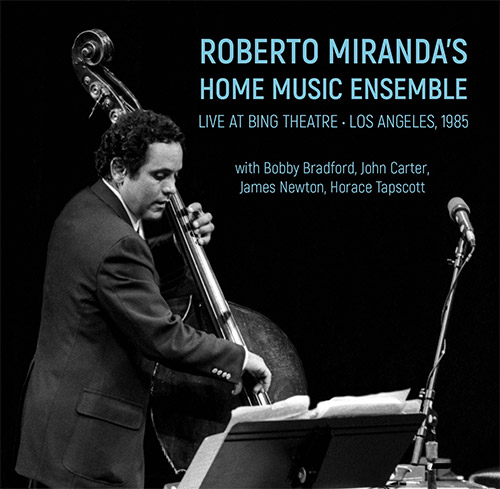

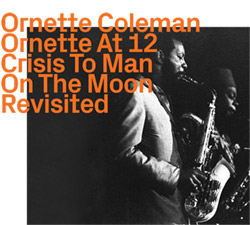
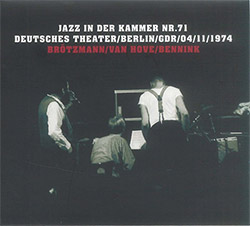
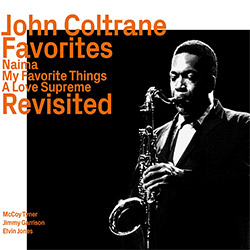

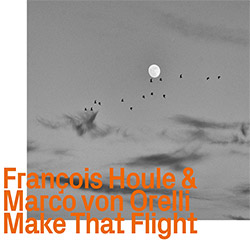

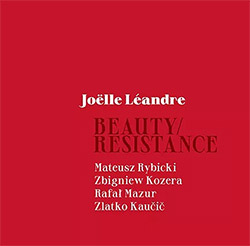

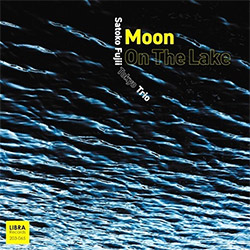

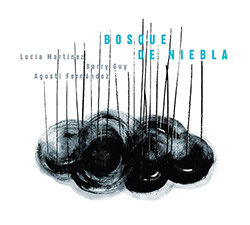
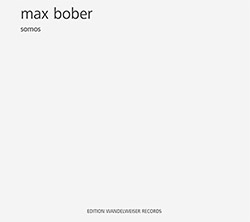

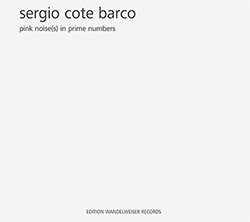




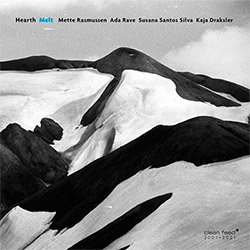



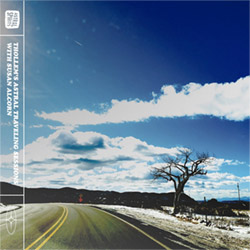

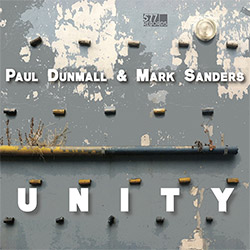


![Guy, Barry / Ken Vandermark: Occasional Poems [2 CDs]](https://www.teuthida.com/productImages/misc4/34849.jpg)
![Novoa / Carter / Mela Trio: Vol.1 [VINYL]](https://www.teuthida.com/productImages/misc4/35236.jpg)


![Elephant9 : Mythical River [VINYL]](https://www.teuthida.com/productImages/misc4/34624.jpg)
![Evans, Peter (Evans / Eldh / Black): Extra [VINYL]](https://www.teuthida.com/productImages/misc4/35279.jpg)

![McPhee, Joe: Straight Up, Without Wings [BOOK]](https://www.teuthida.com/productImages/misc4/35454.jpg)
![Jeck, Philip: rpm [2 CDs]](https://www.teuthida.com/productImages/misc4/35455.jpg)













![Barker / Parker / Irabagon: Bakunawa [VINYL]](https://www.teuthida.com/productImages/misc4/35533.jpg)
![Blaser, Samuel / Marc Ducret / Peter Bruun: Dark Was The Night, Cold Was The Ground [VINYL 10-inch]](https://www.teuthida.com/productImages/misc4/35492.jpg)








![Warren, Kenny (Warren / Hoffman / Ellman): Sweet World [VINYL]](https://www.teuthida.com/productImages/misc4/35451.jpg)




![Blake, Ran / Dave Knife Fabris: Live Amsterdam 2006, First Visit [CD + POSTCARDS]](https://www.teuthida.com/productImages/misc4/35275.jpg)













![DNS: Taking Big Bites Of The Khandas Three Cafes Deep [2 CDs]](https://www.teuthida.com/productImages/misc4/35334.jpg)




![Cleaver, Gerald: The Process [VINYL]](https://www.teuthida.com/productImages/misc4/34966.jpg)




![Alva Noto: HYbr:ID II [VINYL 2 LPs]](https://www.teuthida.com/productImages/misc4/35201.jpg)

![Baron, Derek / Luke Martin: Distinct and Concealed [CASSETTE + DOWNLOAD]](https://www.teuthida.com/productImages/misc4/35079.jpg)

![Lyle, Erica Dawn : Colonial Motels [CASSETTE + DOWNLOAD]](https://www.teuthida.com/productImages/misc4/35080.jpg)









![Sanna, Claudio: Compositori Sardi Contemporanei II [2 CDs]](https://www.teuthida.com/productImages/misc4/35317.jpg)







![Zurria, Manuel: Fame di Vento [3 CDs]](https://www.teuthida.com/productImages/misc4/35167.jpg)

![Granberg, Magnus / Nattens Inbrott / Skogen: Holde Traume, Kehret Wieder! [2 CDs]](https://www.teuthida.com/productImages/misc4/35038.jpg)
![Frey, Jurg: Outermost Melodie [2 CDs]](https://www.teuthida.com/productImages/misc4/35039.jpg)

![Pavone, Jessica: Reverse Bloom [VINYL]](https://www.teuthida.com/productImages/misc4/34895.jpg)




![Modney (Modney / Wooley / Gentile / Roberts / Pluta / Symthe / ...): Ascending Primes [2 CDs]](https://www.teuthida.com/productImages/misc4/34852.jpg)









![Elephant9 with Terje Rypdal: Catching Fire [VINYL 2 LPs]](https://www.teuthida.com/productImages/misc4/35355.jpg)
![Deerlady (Obomsawin, Mali / Magdalena Abrego): Greatest Hits [VINYL]](https://www.teuthida.com/productImages/misc4/34876.jpg)




![Haino, Keiji: Black Blues [2 CDs]](https://www.teuthida.com/productImages/misc4/35109.jpg)



![Surplus 1980: Illusion of Consistency [CD]](https://www.teuthida.com/productImages/misc4/35069.jpg)
![Staiano, Moe: Away Towards the Light [VINYL + DOWNLOAD]](https://www.teuthida.com/productImages/misc4/35037.jpg)



![Caveira (Gomes / Sousa / Abras / Ferrandini): Ficar Vivo [VINYL]](https://www.teuthida.com/productImages/misc4/34643.jpg)
![Gregg, J. J. / David Van Auken: Lunar Prairie [CD w/ DOWNLOAD]](https://www.teuthida.com/productImages/misc4/34611.jpg)

![Coultrain: Mundus [VINYL]](https://www.teuthida.com/productImages/misc4/32439.jpg)
![Mattin: Songbook #6 [VINYL]](https://www.teuthida.com/productImages/misc4/27317.jpg)
![Punkappella: Wake Up [7-inch VINYL]](https://www.teuthida.com/productImages/misc4/17519.jpg)
![Residents, The: WARNING: UNiNC.: Live And Experimental Recordings 1971-1972 [VINYL 2 LPs]](https://www.teuthida.com/productImages/misc4/31521.jpg)
![Coultrain: Phantasmagoria [VINYL]](https://www.teuthida.com/productImages/misc4/30142.jpg)
![Lennon, Sean Ono: Asterisms [VINYL]](https://www.teuthida.com/productImages/misc4/34517.jpg)

![Coley, Byron: Dating Tips for Touring Bands [VINYL]](https://www.teuthida.com/productImages/misc4/17906.jpg)

![Lost Kisses: My Life is Sad & Funny [DVD]](https://www.teuthida.com/productImages/misc4/lostKissesDVD.jpg)